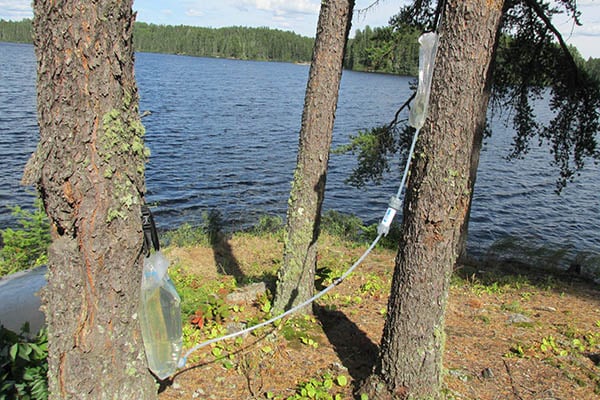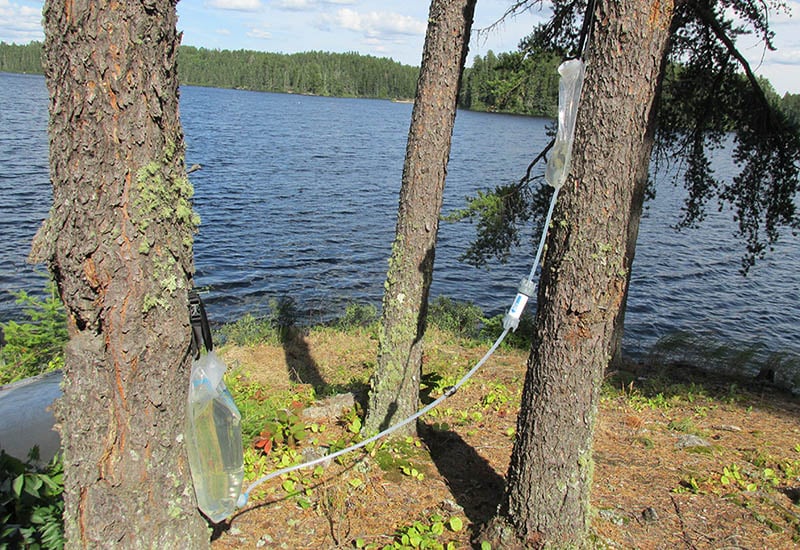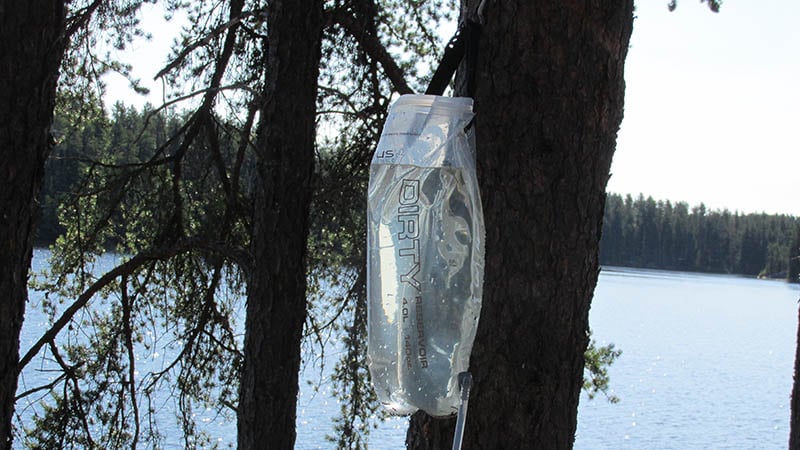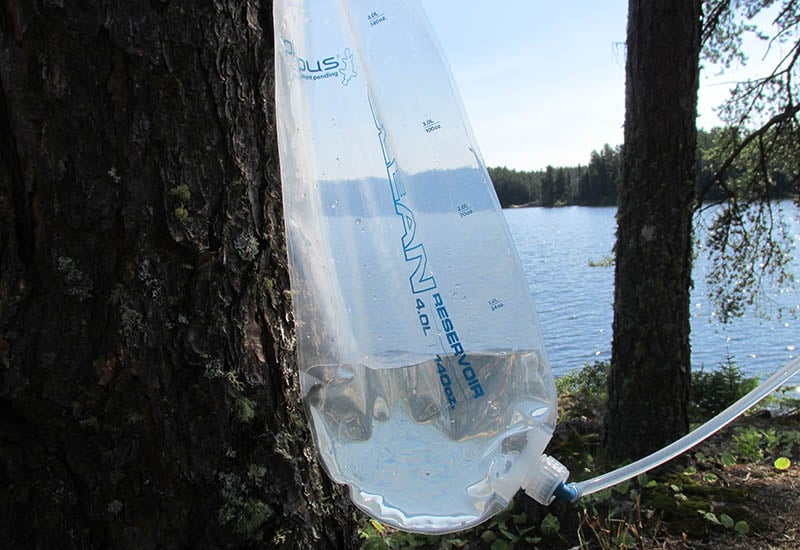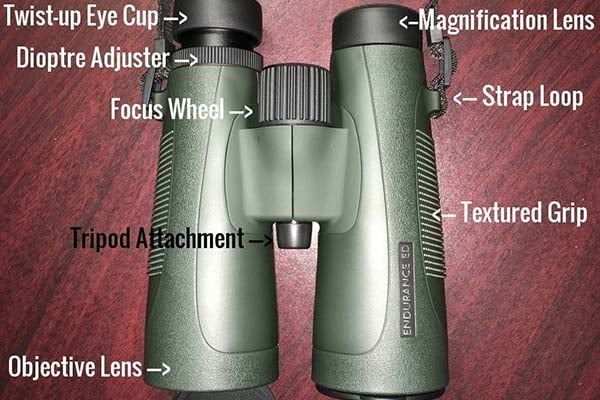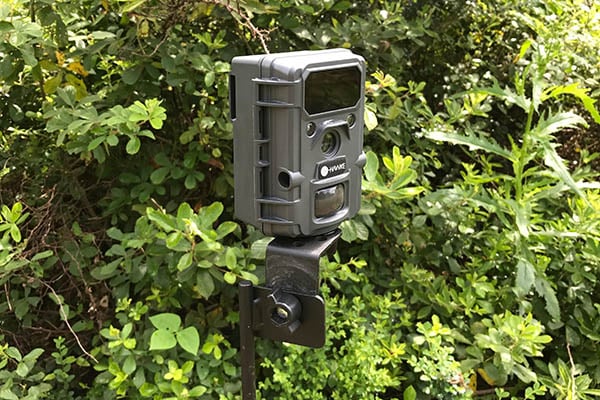Last Updated on
By Pete Rogers
I just returned from back country fishing trip with Kashabowie Outposts in Ontario, Canada. Trips to the remote wilderness always involve a lot of planning and packing. Part of the planning process for this trip included the need to provide potable water for four grown men for a week. Yes it is true we will be fishing on a very remote lake in the boreal forest of Canada where human interaction is minimal, but that doesn’t stop the bacteria from infiltrating these pristine lakes. Remote lakes are prone to a variety of bacteria, E-coli and salmonella. Some type of water filtration system is necessary.
In doing research for some sort of water filter or purifier, I learned a great deal about the differences between a filter and a purifier. In short, a filter is designed to remove sediment, waterborne protozoa and bacteria but not viruses. While a water purifier will remove all three classes of microbes including viruses, it will not remove sediment. There are locations across North America where a filter is all that is necessary to remove all fear of drinking. Let’s look at these in detail and cover why I chose the one I chose.
Viruses are much smaller and simply slip through most filters designed for bacteria. In order to remove the viruses traditionally we needed to use ultraviolet light, purification tablets or boiling water for five minutes. This would either kill the viruses or scramble their DNA and render them ineffective. A few of the new mechanical pump filters are able to remove viruses also.
When to choose a filter over a purifier
When traveling in the US and Canada, a filter is all that is recommended. These filters will remove all traces of protozoa like cryptosporidium and Giardia, and bacteria such as E-Coli and salmonella. According to the EPA there is little to no threat of viruses in wilderness streams or lakes in North America.
Waterborne viruses that we would be concerned with are largely transferred by human waste, making the use of a purifier where human traffic is minimal not necessary. However it is very important that your filter is designed to remove these protozoa and bacteria. Some filters are designed only to remove unpleasant taste and not the contaminants. The EPA recommends filters to remove contaminants down to 0.2 microns. Anything that does not remove contaminants down to 0.2 microns is not safe for drinking. When it comes to potable water, err on the side of safety.
If you are traveling to third world countries or concerned about the purity of the water and are unsure of the quality, err on the side of the purifier. It is important to remember that boiling and ultraviolet light and tablets do not remove sediment from the water. In these cases it is recommended that you purify and filter the water.
For our trip we chose to use the filter system. The choice is based on the remoteness of the lake, the recommendations from the EPA and the ease of doing it. It is noted, that even when I choose to purify the water for safety, I always filter first to remove sediment and debris before purifying the water. Remember the purifier only kills stuff, it doesn’t remove sediment or bad taste. I just cannot make myself drink muddy looking water, regardless how ‘pure’ it may be. I have to remove as much sediment as possible first.
Filters come in a variety of configurations. There are manual pumps that you stick into the water source, and draw the water from the source through a filter and it exits into a different reservoir pure and clean. A lot of backpackers like this system because it is light. Personally, it is my least favorite because it takes so much effort for such little results. There are other styles that compete in weight and do just as good if not better.
Another style is chemical. You scoop up a bottle of water, and drop into the bottle some tablets that have to dissolve and they kill all contaminants within the water. This tends to render the water unpalatable. It just tastes bad. And can take up to ten minutes for the tablets to completely dissolve.
Straws, are small thin devices with a micro filter built into the stainless straw. You simply insert the straw into the stream or lake and start drinking. It is light and easy but not very effective for taking water with you.
Last is the gravity flow systems. There are several to choose from, and this works so well it is my personal favorite. A bag of dirty water is filled, hang the bag on a limb or something head high or above, and open the valve. The dirty water flows through a filter removing the contaminants and deposits the clean water into the lower bag.
We chose the Platypus gravity Works and it worked just as advertised. We chose it for two reasons. First it is the only one we could find with a 4.0 liter bag and for a group of our size, and we needed to filter a large quantity. The system is easy, a 4.0 liter bag of dirty water was filled and hung on a tree limb while the clean water bag was hung below and the valve opened. In just over five minutes the entire 4 .0 liters was filtered and cleaned. Little to no effort was extended. This system kept four men hydrated all week by doing eight to twelve liters a day, and we had plenty of potable water without fear of contaminants. In all it took relatively little time to produce clean water.
Either way, it is important to understand the difference between a filtration system and a purifier. There is no need to purchase a purifier when a filter will do the job. The choice between a filter and a purifier was one that was not taken lightly. Getting sick in the wilderness is not a thing to take lightly. If you are staying in the US or Canada, the filter is sufficient. (Check your local advisories before deciding which is best for your particular adventure).
Lastly, the sheer cost factor was also a deciding factor. The Platypus filter costs us $52, while a comparable purifier was over three hundred dollars. While you should not put a price on your health when it comes to good water, it is still a factor when deciding which to pack along.
I will be using my Platypus this October in elk camp, and it will tag along with me on all future adventures into the wilderness. Weighing in at just over 5 ounces, I won’t even know it is there until I am ready to use it and I refill my pack bladder with good clean water.
